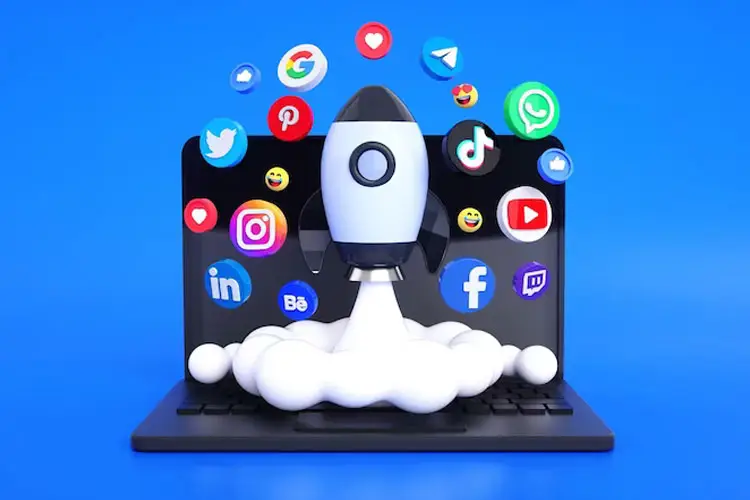Introduction & Purpose
Knowledge update and Industry update at Skyline University College (SUC) is an online platform for communicating knowledge with SUC stakeholders, industry, and the outside world about the current trends of business development, technology, and social changes. The platform helps in branding SUC as a leading institution of updated knowledge base and in encouraging faculties, students, and others to create and contribute under different streams of domain and application. The platform also acts as a catalyst for learning and sharing knowledge in various areas.
Dr. Petr Svoboda
From Different Corners
There are a lot of different investment opportunities in 2020 and because everyone’s resources are limited, people have to make a decision on where to invest their time and money. This decision is to a large extent depending on a potential return, but mostly on the need, willingness, and ability to take a risk.
The highest potential return and the lowest risk at the same time can be achieved if people decide to invest in themselves. Investing time and money into any form of education is usually the best investment people can make, especially when they are young. Learning a useful skill such as picking up a new language, designing a website, or developing an application for Android can bring a better paying job in the future, or even opportunity for starting their own business with less risk involved and greater success rate.
When thinking about starting a business, many people imagine a scary process of leaving a job and jumping into the unknown. It is important to realize that starting or running a business does not have to be a full-time activity. According to The Hartford (2018), 25% of the US citizens have some sort of a side business while continuing their full-time job. This research is suggesting that launching a side business is becoming a common practice and that in 2020 the field can become large enough for anyone to start their own venture.
To minimize risk even further, many ways of starting a business today do not require a large upfront investment. People only need to take advantage of this opportunity and implement their ideas in practice to reap the benefits in the form of extra income the business might quickly start generating.
The extra revenue generated by the side business is the most obvious reason why people launch new ventures. But the research is showing there are other reasons too. Many people feel stuck in their full-time jobs without being financially or emotionally fulfilled and the idea of starting a business offers them an opportunity to do the kind of work they enjoy.
While starting a business might still seem off-putting for some, others might realize that spending some extra hours on doing what they like thinking how to transform it into an income-generating business can eventually pay off. Moreover, the side hustle soon becomes a primary source of income and wealth for many.
When thinking about which business to start, people should first focus on their passions, talents and specific skills they have, whether work-related or not. This will increase both the motivation and experience needed to make the business successful.
While having a lot of extra money allow people to comfortably invest in a more passive, automatic way, investing in education or starting a business can be the best investment anyone can make in 2020 – whether to generate extra income or to simply spread the wings and get away from feeling stuck in the current position.
References:
The Hartford (2018) No Business Is Too Small for Insurance. Available at: https://mms.businesswire.com/media/20180925005605/en/680213/1/TheHartford_Side_Business_Survey_InfographicFINAL.pdf.
Prof. Haitham Alzoubi
From Different Corners
One of the determents of success for any person in the past was based on an intelligence test IQ, that measures memory, analytical thinking and mathematical capabilities, and thus the possibility of predicting future success in work. Recently, Emotional Intelligence also a determent of success which measure the ability to communicate with people and control feelings and skills of expression, as it contributes significantly to achieving success on many levels of life. There is no doubt that traditional intelligence and emotional intelligence play an important role in achieving professional success. But finally, in the digital transformational era and the field of Artificial Intelligence capabilities in work, and its skills for success, a new type of intelligence appeared that represent the ability of the mind to understand the changes in the environment in the right way and right time and take the proper action. The mind able to process a high level of analysis and the ability to adapt and response and deal with environmental uncertainty effectively. "Adaptive Intelligence" is not only the ability to understand new information, but also to be able to select the appropriate ones and discard useless information, as well as to overcome challenges and a conscious pursuit of change. This type of intelligence is coupled with flexibility, a passion for knowledge, courage and the ability to challenge difficulties and enjoy the skills of solving dilemmas.
Will the "Adaptive Intelligence" in the environmental uncertainty become more important for professional success compared to traditional intelligence? Technologies have dramatically changed the performance of many jobs and will continue to change. Having such skills would be better to do the work more quickly and accurately. And in order for the employee to maintain his/her role, he/she must acquire new creative skills that enable him/her to solve emerging problems as well as the ability to understand and communicate better and accountability with the use of human hyper intuition to have better performance results.
The three forms of intelligence are integrated to achieve success, as it helps the organization to overcome obstacles and improve adaptation, as the ideal approach to do what possesses traditional intelligence, emotional intelligence and adaptive intelligence together, which is not available to all, as "there are geniuses who are not creative", and intelligence without flexibility and adaptation alone makes one find it difficult to be the best. Today, organizations are looking for those who are able to adapt, where behavioral skills are the most important work today, and at the forefront of these skills is “preparing for flexibility, adapting to it and adapting to change".
Dr. Tariq Mehmood
Retail and Marketing
What is Social Media Marketing?
Social Media Marketing provides businesses the opportunity to leverage the power of social media platforms to connect with their audience.
Prof. Sakkthivel Annamalai Manickam
Retail and Marketing
Competition is the way of life in today’s corporate world, and companies spend billions anticipating, tackling, and winning over competitors either from the same industry or a different one.
Dr. Bashar Yaser Almansour
From Different Corners
The concept of cryptocurrency has been widely recognized in the last few years. These are digital currencies that make use of encryption for verification of a transaction. Bitcoin is a digital currency that was based on public-key cryptography. The major innovation in the case of Bitcoin is the decentralization of technology. The bitcoin database is distributed across a network of contributing computers, instead of storage of transactions on a single server. The database holding bitcoin database which is called “Blockchain” where blocks are added in the chain during the process of bitcoin mining. The mining process revolves around the solution of compound computational puzzles. In doing so, the miners receive the incentive of bitcoin rewards and transaction.
The bubble behavior of bitcoin is prompted by the noise traders which imply market inefficiency to increase, hence, there is a notion of experience of “fad” by the bitcoin market. The combination of different market news and events happen to have a strong effect in price volatility of bitcoin. The bubble-like behavior explains the increased volatility as a result of increased trading. The unsophisticated noise traders of bitcoin get easily affected by expectations and behaviors of other traders which can lead to “herding behavior, prospect behavior and heuristics behavior.” Hence, the decisions are mostly made in the light of heuristics instead of incorporating actual assessments.
From the behavioral finance point of view, the crowd activity literature is titled herding. The herding is described as a decision-making approach characterized by imitating other peoples’ behavior. It is also defined as a situation in which rational investors tend to act irrationally by imitating others’ judgments when it comes to making such investment decisions. It is stated that the herding factors affect asset prices significantly which this consider a part of the capital assets pricing theory. Moreover, herding can cause some emotional biases including conformity, congruity and cognitive conflict, the home bias, and gossip theories.
Traditional finance theory states that investors’ behavior is not significantly affecting the prices of assets. The argument behind that determined by investors’ demand that will be neutralized by the arbitrageurs’ transaction and by the trades, therefore, discounts the potential influence of the investors’ sentiment or investors’ feelings. Investors believe that they make their investment decision logically and rationally. However, the behavior finance theory states that investors’ behavior is significantly affecting the prices of assets. This indicated that behavior finance factors play a significant role in affecting investment decisions made by investors in the cryptocurrency market. As a conclusion, Behavioral Finance studies the psychology of financial decision-making. Most people know that emotions affect investment decisions. The behavioral finance holds out the prospect of a better understanding of financial market behavior and scope for investors to make better investment decisions based on an understanding of the potential pitfalls. The behavior finance factors play a significant role in influencing investment decisions made by investors in the cryptocurrency market.
Prof. Sakkthivel Annamalai Manickam
Retail and Marketing
Consumers today can access products and services from all the world, thanks to the globalization drive, which is uniting most of the countries. Thanks to the Internet, which created an information explosion and enabled the
Prof. Raid Al-Adaileh
Information Systems
With 2.3 billion users, Facebook is the most popular social media platform today. YouTube, Instagram, and WeChat follow with more than a billion users. Tumblr and TikTok come next, with over half a billion users (Statista Report, 2019).
Dr. Manas Pradhan
Information Systems
Any disease is generally caused to humans because of biological disorders. These diseases may be an infection from external factors due to deficiency in chemical components, physiological changes or heredity.
Dr. Sharon (Shaimah) Mendoza Dreisbach
Travel and Tourism
Following the affordability of traveling by air, more patients are now able to roam around the world whenever their hearts desire (Dreisbach, Vij, & Dreisbach, 2020).
Dr. Kakul Agha
From Different Corners
Happiness in the workplace is a buzz word nowadays. Forums, discussions, workshops, and seminars are organized to guide us to the path of happiness. But is it really happening? This is a key question.
Enhancing happiness needs a sneak peek in PERK where P stands for purpose, E for Engagement, R for Resilience, and K for Kindness. These four elements account for the happiness of employees in contemporary workplaces. A successful manager and enthusiastic workforce aim to attain PERK in order to be happy in the workplace. But again we stop to ask how to use PERK. Let me elaborate!
Every organization frames a mission and vision for achieving a set of goals. So it is important for employees to reflect on their core values and feel purposeful at work. Managers must instill a sense of passion and purpose through ethical means in the way employees perform their work. Further, the manager could also promote purpose by making core values explicit at the workplace, and implementing policies that align people’s day-to-day experiences with core values. As Swarthmore College Professor Barry Schwartz explains, we want to see how our progress is tied to meaningful, important, and self-transcendent impact in the world.
Engagement at work comes with enjoyment and fun. Managers and employees should include some playfulness, creativity, humor, and levity at work. It is also vital to develop a sense of ownership among employees. Flow at work is critical and organizations are now moving from hectic, meeting-clogged, multitasking and devise-notification laden schedule to more encouraging and uninterrupted periods of deep work concept. Some international organizations like Southwest Airlines and Zappos have earned a reputation for engaging employees in positive ways.
Resilience is all about bouncing back to normal performance and productivity after setbacks and failures. The best technique for doing this is mindfulness. Being mindful can be the starting point of having a better opinion of self, revising our old learned habits of self-criticism and self-blame.
Managers can create a culture of being mindful. Further, employees can also be authentic in order to be more mindful. Mindfulness can be enhanced through non-work related wellness and charitable activities. Adobe’s Project Breath is all about building and sustaining mindfulness among the employees.
Our last tenet of happiness at work is kindness. Being kind at work is practicing empathy and compassion, treating colleagues with dignity and respect, practicing gratitude and handling conflicts positively and constructively. Employees are urged to be good listeners and effective team players. Apologies also enhance respect and commitment in building trust and happiness at work. Georgetown University Professor Christine Porath’s book Mastering Civility explains being civil means building trust; sharing resources, feedback, and credit; and being a good listener. For leaders, civility skills are critical to avoiding the corruptive influence of gaining power.
Research shows happiness at work in essential for organizational success and achievement of its KPIs, mission, and vision. Using the tenets of PERK can enable enhanced happiness among employees at the workplace.









